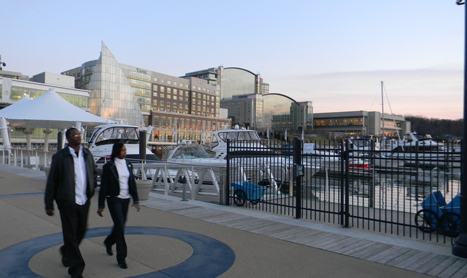ANNAPOLIS – Four years ago in Ohio, Penn National Gaming Inc. outspent its opposition by more than $12 million in a successful effort to kill a ballot issue that would have allowed for the building of the state’s first casino.
Why would a casino company spend millions to stop a casino? Penn National owns a casino just over the border in Indiana that could have lost business if the project near Wilmington, Ohio, had gone forward.
This year, Penn National has already contributed $29.1 million to kill Question 7, which would expand gambling in Maryland and allow for a Prince George’s County casino, a likely competitor to the company’s Hollywood Casino at Charles Town Races in West Virginia.
According to the results of a recent Washington Post poll, the campaign is having an effect. While Marylanders appear to be almost evenly divided on the ballot question, confidence that casinos will generate more money for schools, a key claim of proponents, is low, with 21 percent saying they were “not so confident” and 34 percent saying they were “not confident.”
If passed the referendum would legalize table games, let casinos operate 24/7 and allow a sixth location in Prince George’s County.
Proponents have also spent millions, with MGM Resorts International taking the money lead over Penn National this week.
“Both sides are playing a poker game,” said Bill Eadington, director of the Institute for the Study of Gambling and Commercial Gaming at the University of Nevada, Reno.
In the Ohio case, Issue 6 provided for one casino – the state’s first. Through the No On 6 Committee, Penn National put $38 million against the measure. On the other side, the committee My Ohio Now received $25.7 million from Lakes Entertainment Inc., the company hoping to build the casino.
The measure was defeated, with 62 percent of voters against it.
A year later, Penn National did support another ballot issue in Ohio that allowed four locations to be built, giving the company a chance to open its own casinos. Proponents of that referendum received more than four times what opponents raised. The measure passed 53 percent to 47 percent.
Eadington said the driving factor behind the measure passing was the effect the economic recession had, balancing out the benefits of a casino with the social negatives.
In Maryland, Eadington said MGM Resorts International, the company hoping to build a casino at National Harbor in Prince George’s County, is a much stronger company than Lakes Entertainment. So far, MGM has contributed $29.5 million of the $35.7 million total given to For Maryland Jobs and Schools, which supports gambling expansion.
“Where Penn might have overwhelmed Lakes, MGM has gone toe to toe,” Eadington said.
Penn National is the sole contributor to Get the Facts – Vote No On 7, according to a ballot issue report released Oct. 12. A new ballot issue report covering contributions and expenditures up to Oct. 21 is due Friday.
Capital News Service was unable to reach officials at Penn National for comment.
The Peterson Companies, developers of National Harbor, have donated a combined $2.2 million between For Maryland Jobs & Schools and another committee supporting expansion, Maryland First NOW – Vote Yes on 7.
Looking at the amount of money contributed so far, for every person in Maryland, companies have spent more than $11. In Ohio, about $5.55 was spent per person on the first referendum.
“They’re basically pushing money onto the table in hopes they will be successful,” Eadington said.
The committees’ spending is more than the two past gubernatorial elections combined.
“To see that amount of money in the state of Maryland is unprecedented,” said Todd Eberly, a political science professor at St. Mary’s College.
The majority of that money has gone towards television, online and radio advertisements, according to a report covering contributions and expenditures through Oct. 7. Up to that point, the two sides had spent about $16 million, or about 90 percent of their expenditures on media.

